Watercolour paintings are one of the most sensitive forms of art, they can be disturbed easily by their environment as well as accidental tears and creases. There are many steps you can take to ensure the protection of your watercolour going forwards, including choosing the correct framing materials and arranging for appropriate conservation treatments to eradicate any problems before they worsen.
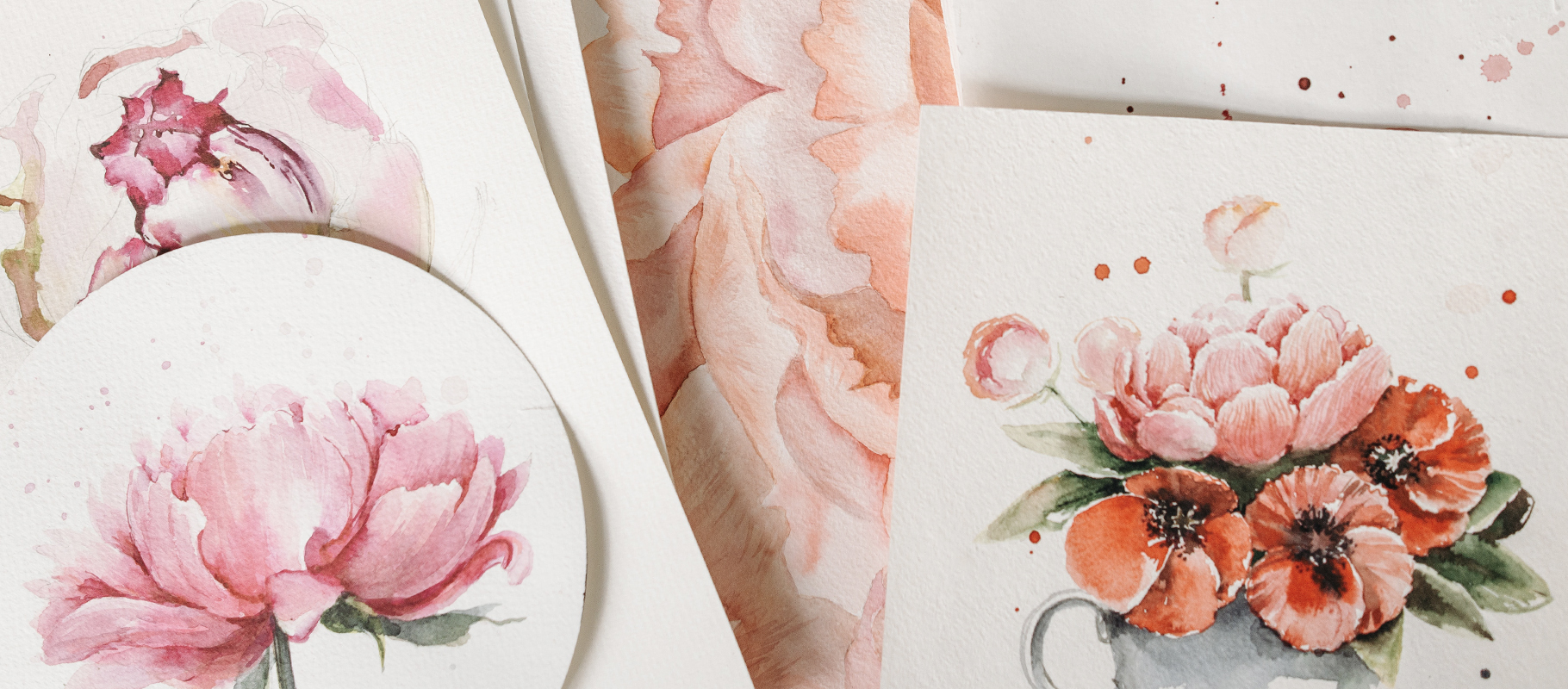
This article will cover the appropriate display and storage conditions for a watercolour artwork, as well as the issues that can be sensitively restored by our ICON accredited paper conservator.
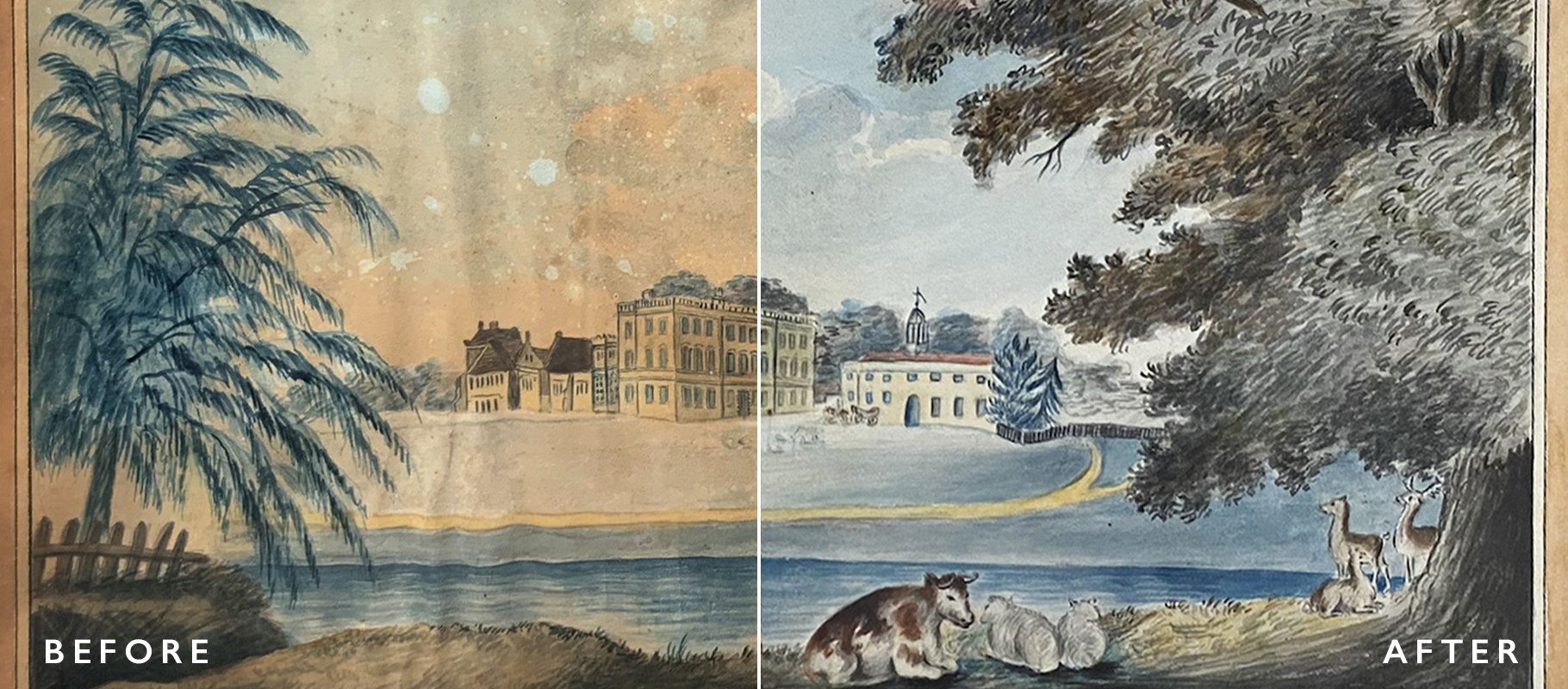
How to frame and mount a watercolour safely
Mounts and other framing materials can have a detrimental effect on the long term stability of your piece if they are not in line with conservation standards. One of the most frequent reasons for watercolour restoration is discolouration and darkening of the paper caused by old mounts, backing boards and adhesives.
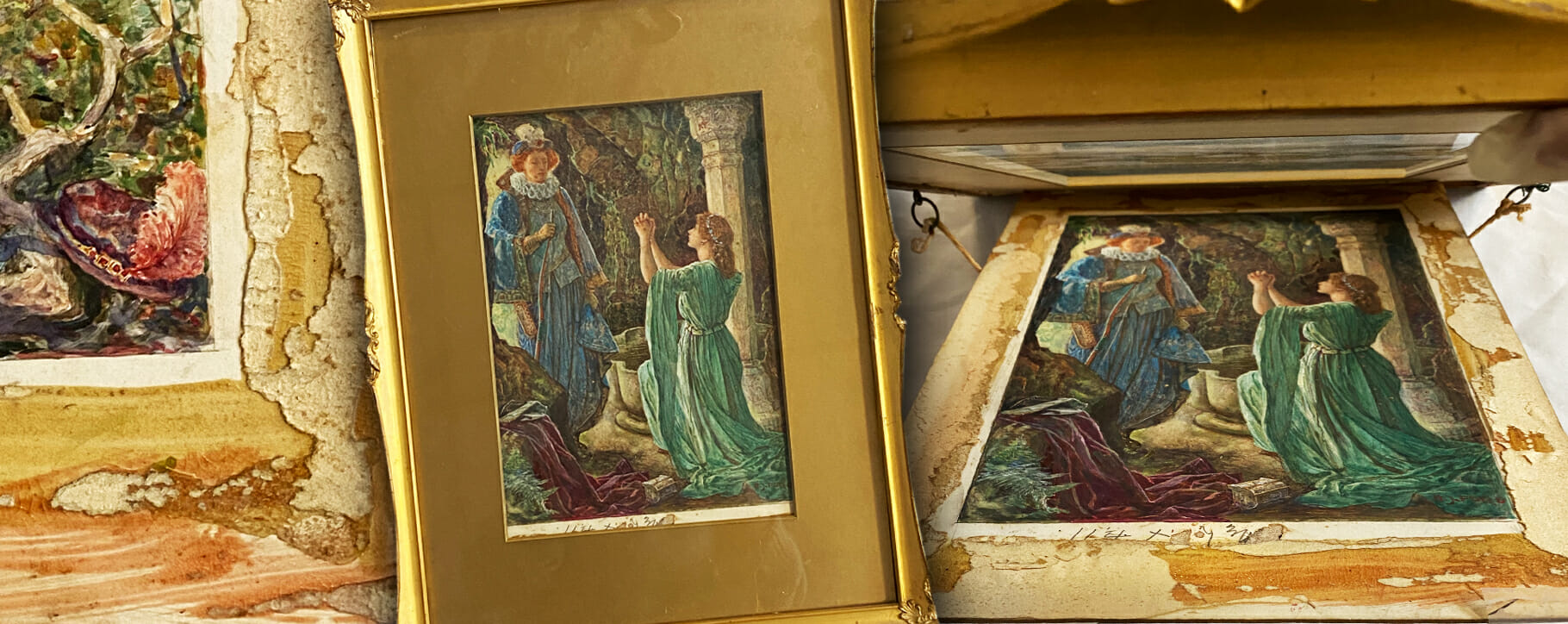
This is sometimes referred to as a mount burn – the appearance of brown marks around the edge of the artwork, where a window-mount with acidic properties has contaminated the paper. Sometimes this browning from acid damage comes from behind the watercolour due to a backing board or card, causing widespread deterioration.
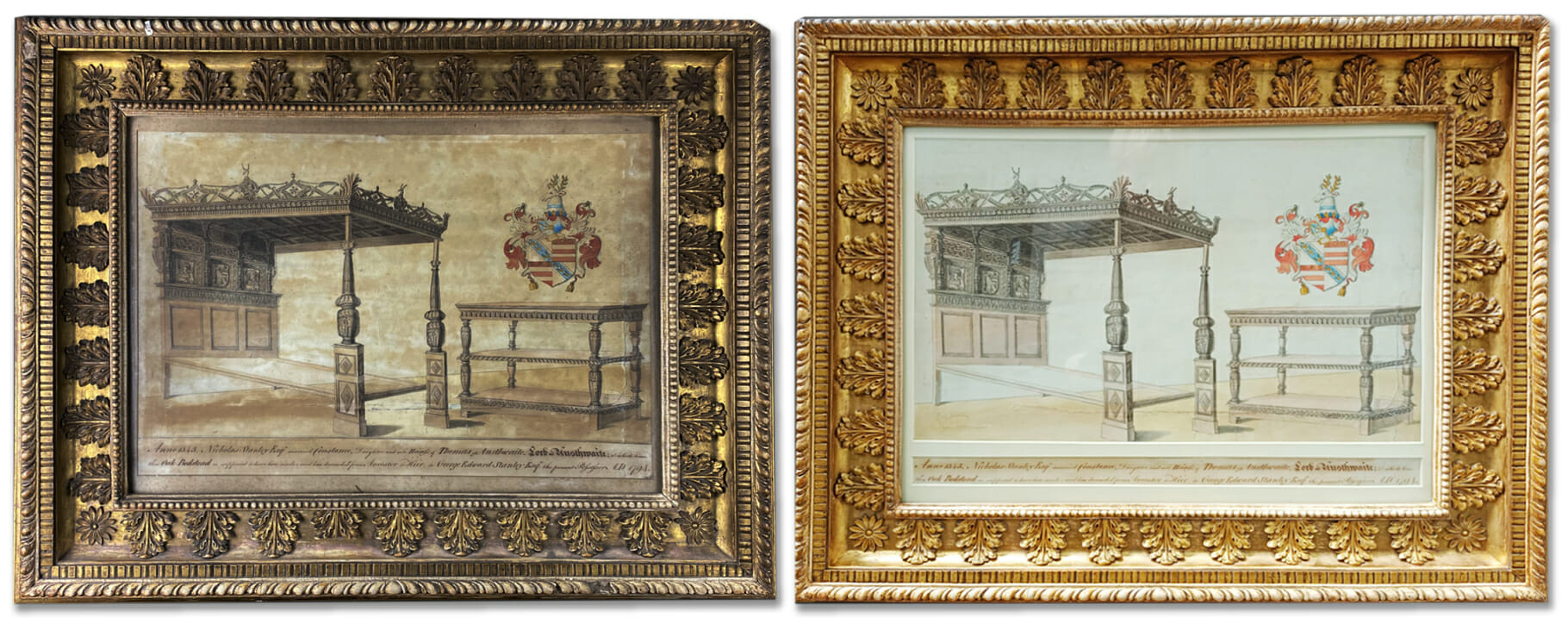
Above you can see a watercolour drawing that has been affected by an acid mount and backing board. It is shown before and after restoration, complete with a new conservation appropriate mount and a revived gilt frame.
We always suggest that mount boards and framing materials are acid-free or very low in pH levels to ensure this staining cannot occur. Our framing team provides materials that are of a museum standard, as well as UV protective glazing to avoid colour loss.
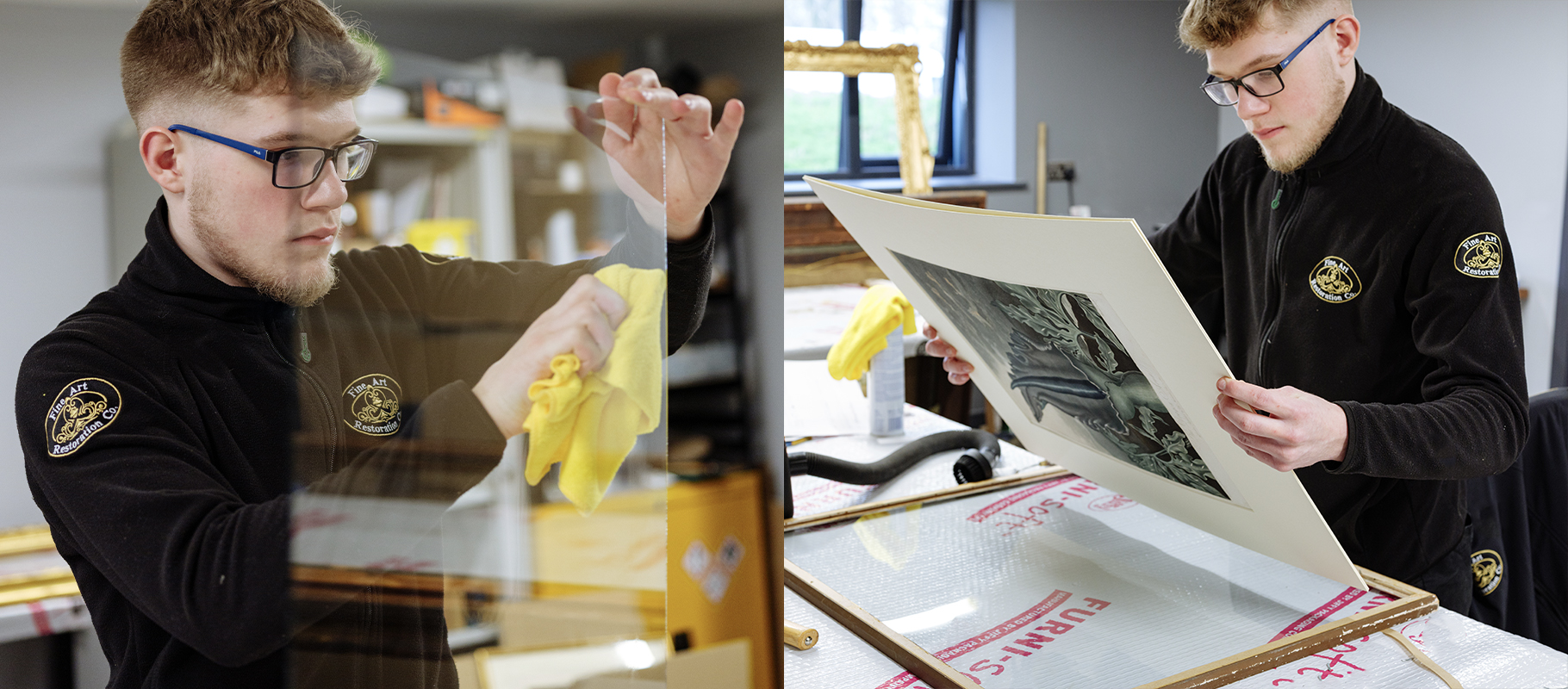
When glass is fitted to a watercolour frame, we suggest that you use museum glass (UV protective with less reflection) or standard UV protective glass. Works on paper, such as watercolours, prints and posters, are highly susceptible to fading when exposed to sunlight, so the more protection you can provide the better. Any glazing needs to be placed away from the surface of the painting to avoid it sticking.

How should I store my watercolour painting?
Ideally, it would be recommended that your watercolour, if not on display, is kept in a specially designed case known as a Solander box or kept in its frame for extra support (as long as all of the framing materials are free of acids).
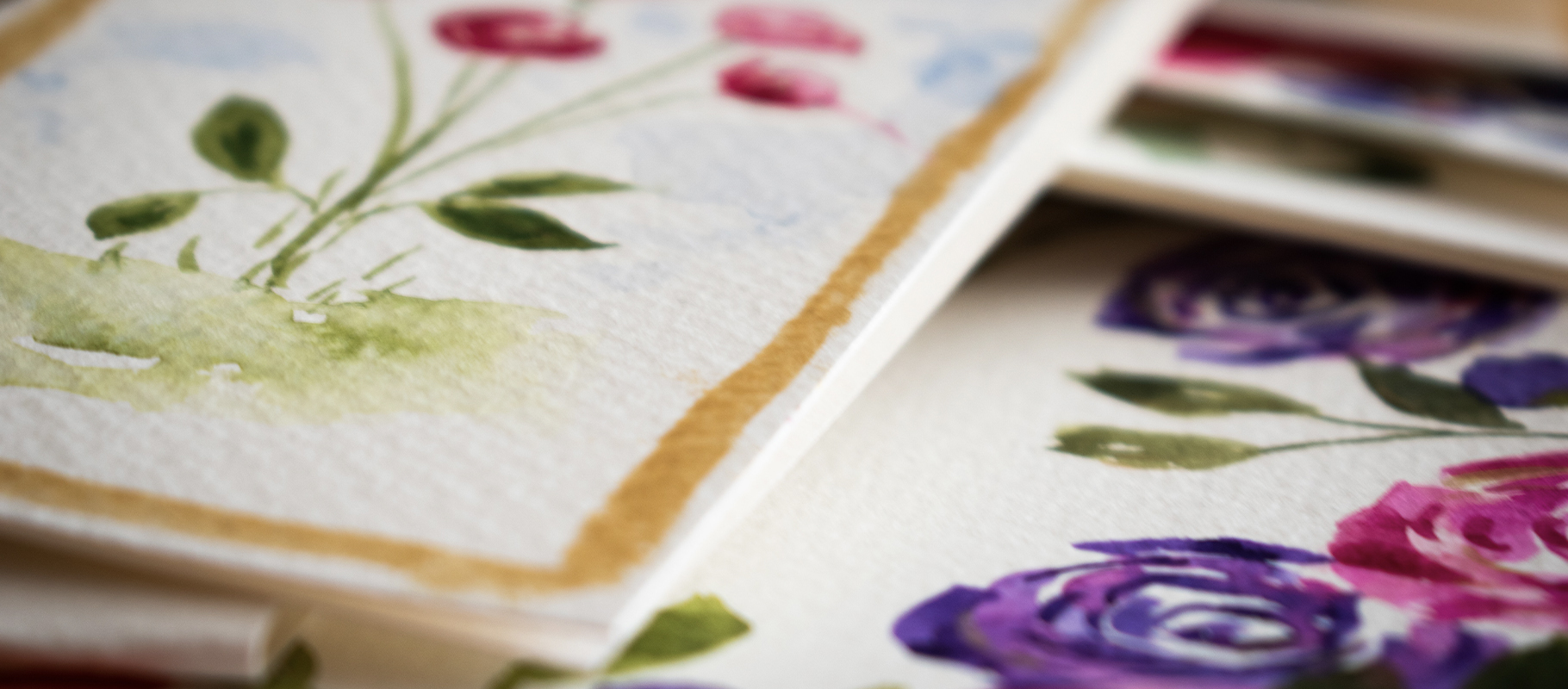
Do not pile watercolours directly on top of one another. To ensure the safety of your artwork, the individual pieces should always be mounted in conservation standard materials and then stored away from light and dirt in an enclosed box. Put a layer of acid-free paper or card between them and ensure that the painting itself is not directly touching any surrounding materials.
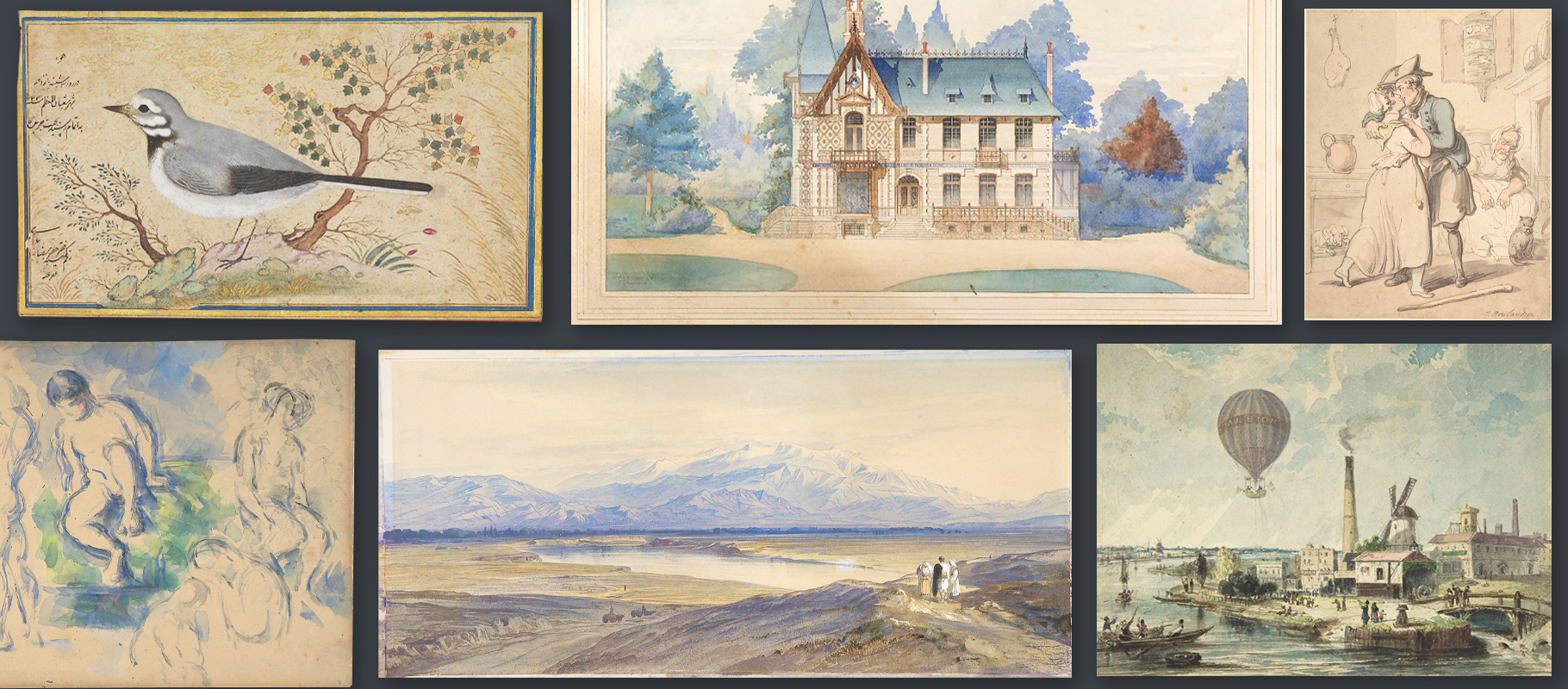
It is advised that when handling your watercolour that you should touch as little of the paper as possible. Ideally clean cotton gloves should be worn when handling valuable paintings and other works on paper.
Environmental Controls
The atmosphere of your watercolour painting should be controlled to avoid any issues. This is the case for artworks that are on display and in storage.
Ideal lighting for watercolours
Fugitive pigments, or in other words, pigments sensitive to light can lead to fading of colour and loss of definition in the painting. Preventative measures can restrict discolouration, such as UV protective glass or museum glass. Even with this in place, it would be recommended that your watercolour is kept away from direct sunlight – for example, hanging directly opposite windows.
Artificial lights should be turned off wherever possible or kept on a dim setting if they are on for an extended period of time each day.
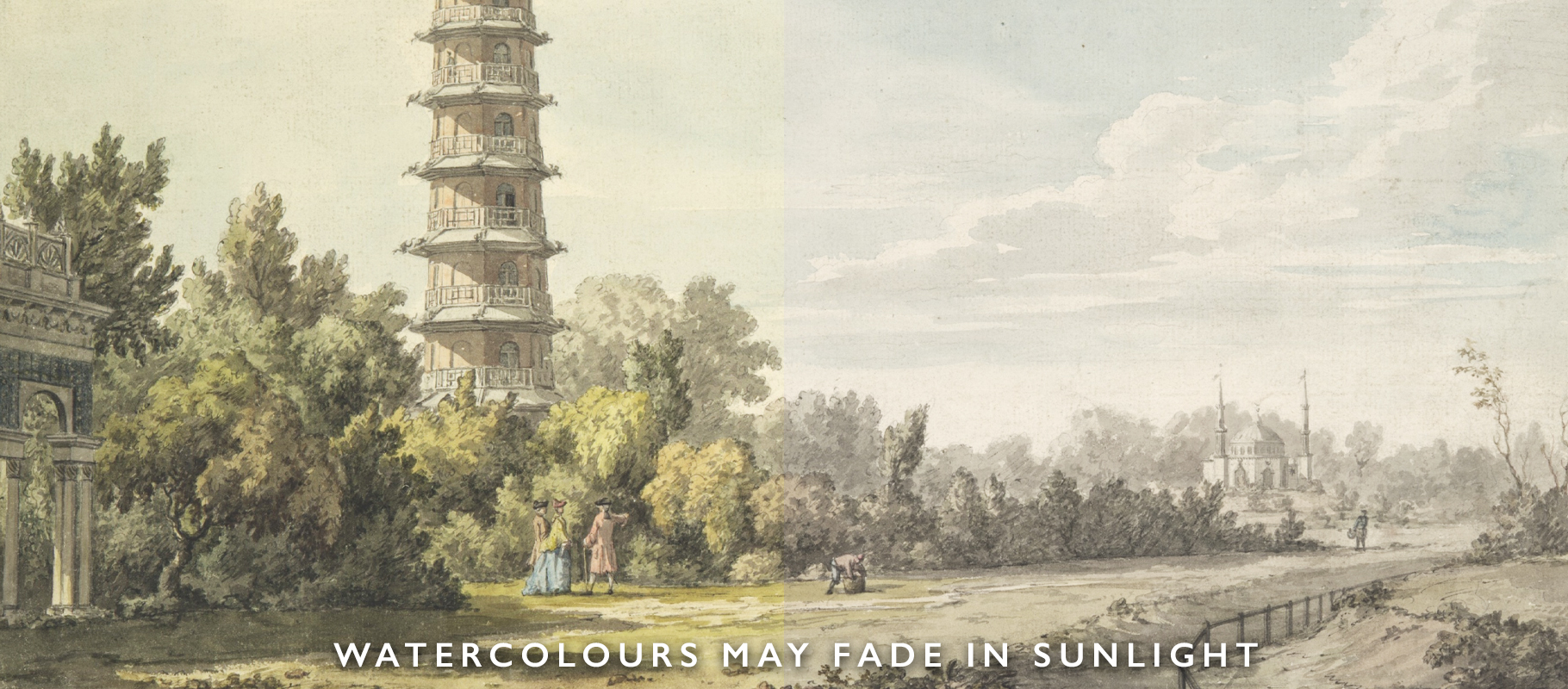
Ideal humidity for watercolours
It is recommended that the conditions remain constant and Relative Humidity is maintained at around 45 to 60.
Paper is hygroscopic, this means that it absorbs moisture from the atmosphere. Consequently, moisture absorption or lack of moisture can weaken the tissue fibres. High humidity may result in movement in the paper, putting it under stress. Mould growth and foxing are also exacerbated by increased humidity.Very low humidity can also be a problem as this makes the fibres brittle.
If your watercolour has become damaged by mould or brittle decay we can prevent further deterioration and restore the artwork, seen below is a mould damaged watercolour that was previously restored by our Paper conservator.

Ideal temperature for watercolours
Avoid extreme fluctuations, around 16 to 19 degrees celsius is ideal.
Hanging the painting on the interior of the outside wall should be avoided as the lower temperature may result in condensation and mould growth on the inside of your frame.
Temperature can affect the speed of chemical reactions that deteriorate artworks on paper. Your watercolour painting should be kept away from direct sources of heat – including above radiators and fireplaces – as high temperatures can cause yellowing, darkening and brittle deterioration. Without secure protection, a watercolour may also become stained by smoke and soot from a fireplace.
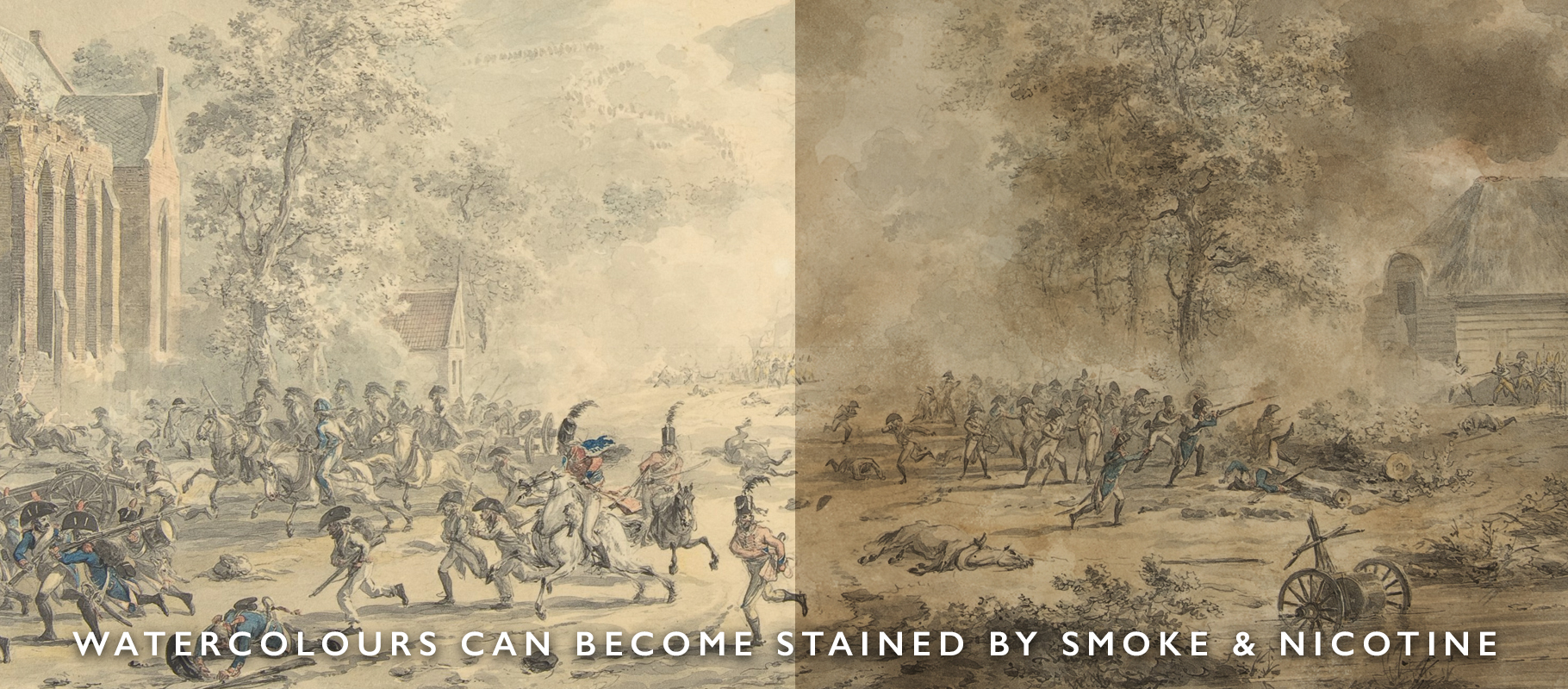
Can watercolour paintings be restored?
Yes, watercolour paintings are frequently restored in our studio. This includes the removal of acidic framing materials, the gentle cleansing of contaminants and staining, as well as treatments to repair ripples, folds or tears. Our framing team can provide museum level materials for the safe display for your watercolour following restoration.
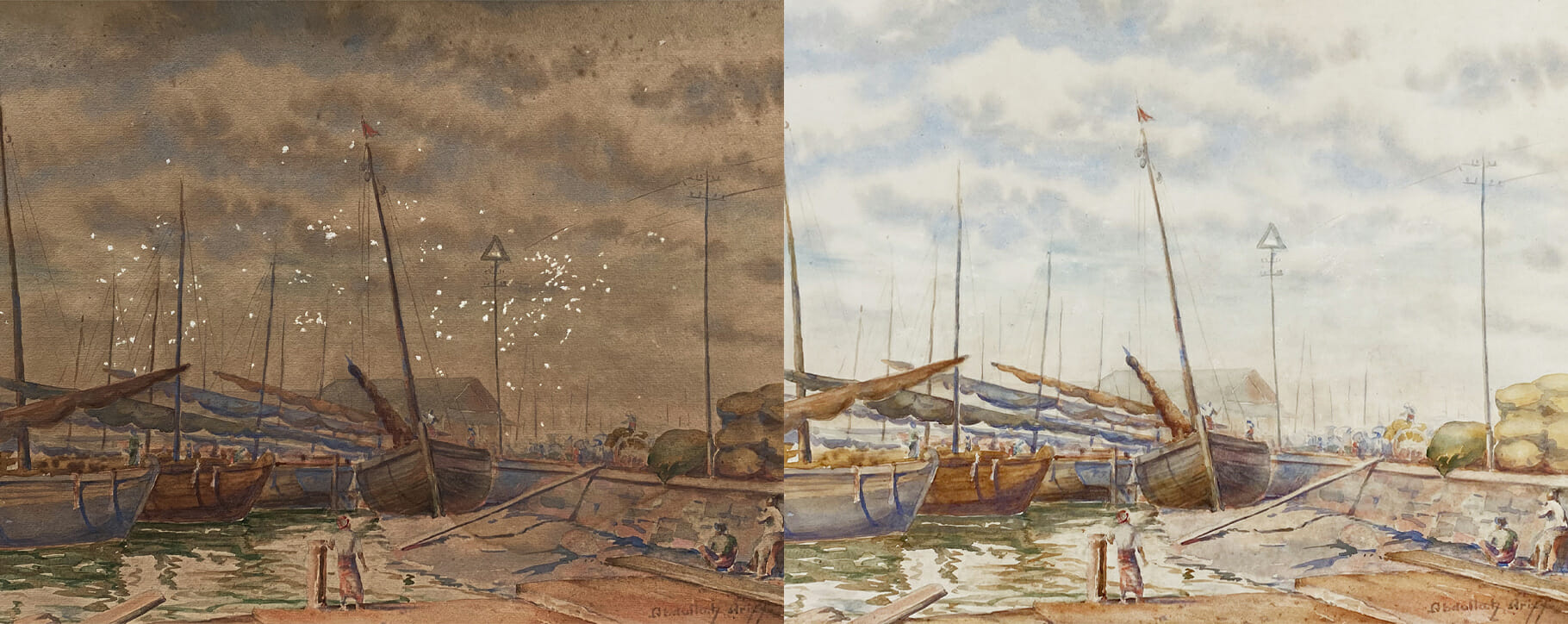
You can call us on 01228 521 231 or email [email protected] to discuss any issues you may be facing with your watercolour or any queries about conservation framing requirements.






